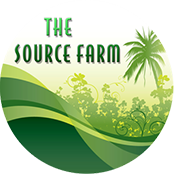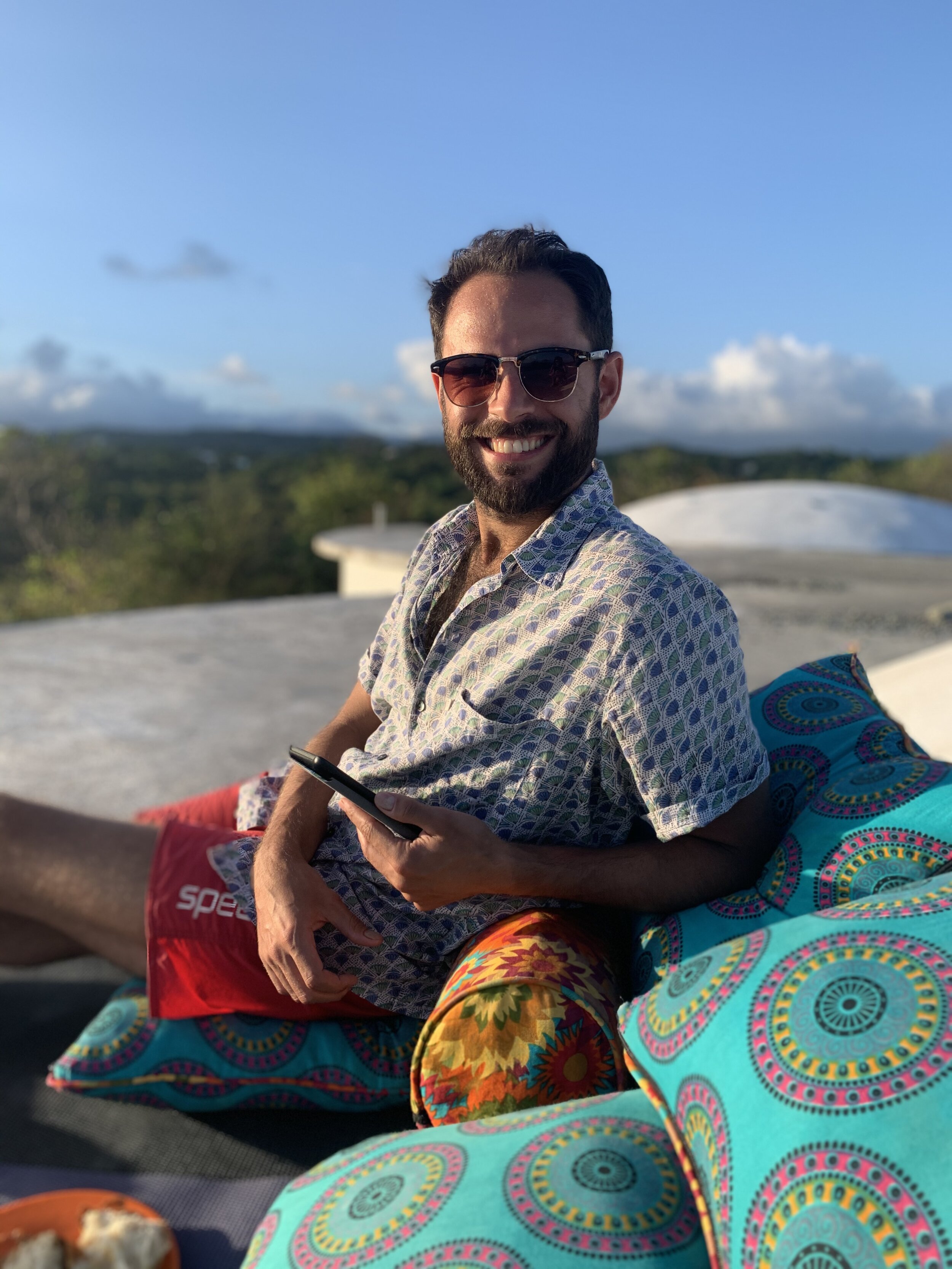Our Trip to The Source
This truly is The Source! Turning into the unassuming entrance from a small track out the back of Johns Town, you immediately feel yourself reconnecting with something, some place more fundamental – something clearer, cleaner, truer. It’s a stunningly beautiful spot, perched on the mountainside in St Thomas on the lesser-tourist-travelled east coast of the island, with the many-blued ocean below and the mountains rising up behind, including in clear view the Blue Mountain peak itself.
We are almost straight into a site tour with the wonderful Nicola – her inspiring vision matched by the humility of someone who knows the land is the true teacher. Nicola, accompanied by more recent addition to the Source community (and all-round gem!) Rodje, shows us round the simple but beautiful structures they’ve built, made largely using sustainable/low-footprint techniques such as “Earthbag”. Like everything else on The Source, the buildings are built in relationship with the land, one seeming to flow into the other.
The farm itself, currently only occupying a small fraction of the 60-odd acre site, is terraced onto the hillside, to avoid top-soil depletion amongst other challenges faced by hillside farming across Jamaica. These terraces are not perfectly curated, weed-free zones with crops segregated into their ‘proper place’; rather, like I imagine all good permaculture, they’re a sprawling, fragrant community of herbs, medicinals, fruits, and vegetables. Moringa trees stand heavy with pods, shading herbs and spices.
Next, we are treated to an impromptu mycology lesson from Rodje while we take a look inside the impressively fitted-out mushroom growing store. Growing many types of mushrooms and with lots of experiments underway, this felt like a mycro-industry of its own, though still working to permaculture principles.
As the sun begins to set, we arrive at the place where we’re staying for the night. A white dome rises up on the edge of a hill overlooking the sea; it looks simultaneously futuristic and ancient. Nicola tells us that the people from John’s Town call it “The Planet”. It was built using a huge (reusable) canvas balloon with concrete plastered over it like a giant papier-mâché sculpture.
Their nearby wellness centre comprises several similar white domes on an outcrop of the mountainside with the fullest view of the ocean from the site. This is beyond any type of building technique we’ve come across. The result is organic and beautiful, almost as though it has grown straight up from the landscape.
In the evening, Nicola and Rodje drive us over to a second plot of land, a new project that will provide a communal storage area for dried produce for the organic farmers network they incubate. At 380 or so acres this is much larger and much less worked (by humans at least).
By the white light cast by a waxing moon, we empty dry guava leaves and French thyme from the solar powered dehydrator. An enormous and ancient-looking tree frames the south-eastern corner of the plot, towering over us, wearing its vines and shrubbery like heavy robes.
While we work, Nicola tells us about the history of the land and how it came to her and the others involved in the community-based entity, GWG, set up to steward it. The roots of the plot feel deep, and indeed we find out it had belonged to George William Gordon.
Like so much of what we’ve heard about the origin of The Source, this is a story of synchronicity and serendipity. An agreement to sell the plot to some other buyers had fallen through when the foundation found out about their plans, which included developing large swathes for residential and other “real” estate, including the removal of the ancient tree for timber. The donor sought a more respectful steward...
This stewardship was clearly apparent as Nicola described one of their first decisions on what to do with the land. They had initially planned to cut back a large meadow near the entrance, but on closer inspection what they had first thought to be weeds turned out to be an abundant mass of rare medicinal and edible herbs. Overcoming an instinct to harvest these and secure a significant revenue boost for The Source, Nicola and team took the amazing decision to pause, and instead listen to and watch the land to hear what it had to say. This dialogue between human and non-human people sits at the heart of The Source and shows an inspiring alternative to the degenerative, extractive human-land relationship which is fuelling climate change and biodiversity loss around the world.
Later that evening, while we’re sat in the outdoor communal dining area adjacent to the kitchen, our conversation roves from the merits and complexities of organic labelling, to the true author of the Matrix, robbed of her story, and back again to the end of extractive agriculture. It makes us yearn for the communal and collective, a life shared more deeply with others, cooking and eating in community and afterwards talking and laughing under the stars.
On Saturday we “help” (read: watch) planting some plantain trees on the farm. Nomi and Dwight teach us about the “compost tea” they use to fertilize the shaved pinky-purple stumps that they’re setting into small holes in the ground. Compost tea is a fermented broth made by letting a permeable bag of compost scraps decompose for a few days. It’s a reminder of the value of what is so often categorised as ‘waste’, and a promise of the potential of returning to a world founded on more circular processes. We take turns ferrying watering cans of compost tea down the gentle slopes of the tiered beds. We also learn about the medicinal properties of many of the common local plants and herbs. We’re excited to do more of this healing centred in the organic and earthy.
The whole place makes us feel like we’re peering through a window into a future, where the abundance of the earth is at once celebrated and facilitated, that begins to heal the deep damage done by centuries of economic and social exploitation under capitalism and colonialism.
Afterwards, awed and replenished in equal measure, Dan and I talk seriously about just dropping everything and buying a plot. We’re still thinking about it.

